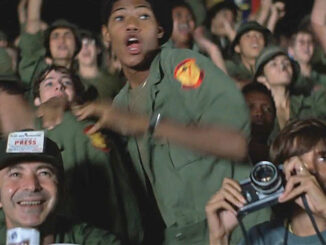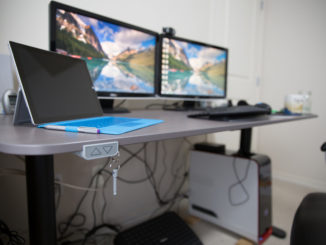
A project so reliant on the most updated, state-of-the-art filmmaking technology that it would have been inconceivable — let alone impossible to realize — even just few years ago, Life of Pi presented director Ang Lee and his editor, Tim Squyres, A.C.E., with many challenges in post-production to get this film made. Squyres discussed them with CineMontage.
CineMontage: Life of Pi is your first 3D effort and required great technical innovation to even make it possible. Can you talk about that?
Tim Squyres: The things that we needed our animals to do in the film would be impossible to shoot with real animals, so we couldn’t make this movie until we could make a photorealistic, computer-generated tiger. That really stretched the boundaries of what was possible — but then to do it in 3D was much harder. Ang was skeptical at first and had to be talked into it.
The biggest reason not to do it was the difficulty involved. 3D slows production down. Also, the film is set on water, and water movies have a history of trouble. Plus, we have animals—some live—as well as kids and an inexperienced lead actor. With 3D added on top of that, we had all the things you’re not supposed to do in one movie. It wasn’t a decision taken lightly, but it seemed worth it once we thought about what we were trying to accomplish. We used 3D to create a more immersive experience, rather than just having stuff sticking out at you.
CM: You actually edited in 3D. Can you tell me about your setup?
TS: Once production was finished, Ang came back to New York with the Christie RealD projector we used in Taiwan for dailies and installed it in the editing room, which was built for it with an 11-and-a-half-foot silver screen. That was my editing monitor. When Ang wasn’t there I generally worked on a 3D plasma screen, but when we were really cutting the film and screening, we worked in what was really a small theatre.
Whenever you’re editing, you’re imagining what the picture on the Avid will be like in a full theatre. Over time, you get pretty good at understanding how the translation works, but I had never cut a 3D movie before, so we cut entirely in 3D and on the biggest screen possible. I’ve still never seen the film in2D.
CM: What was the physical toll of that?
TS: Less than I thought, but many days I did go home with a headache. At the beginning of the job, we bought a great big bottle of Advil but only used half of it. 3D gives you headaches if the images are poorly aligned. Fortunately, as part of our dailies pipeline, the footage went through stereo correction before it got to me. Where there were exceptions, we corrected it ourselves in the Avid.
Even when we screened the assembly in New York, we had editorial composites for all but two shots, where you could actually see the walls of the wave tank. We put in backgrounds and took tiger animation from the previz. I had a 3D model of the tiger I could insert and move around for blocking. When you do that, there are stereo errors that can also give you headaches.
CM: You wore those 3D glasses all day?
TS: You can’t watch the movie and think about it in any meaningful way unless you at least know what’s going on. If at any time I didn’t need the glasses for more than 15 seconds, I’d put them on top of my head. The two systems you can use on a plasma screen involve either passive glasses — which are the cheap, polarized glasses — or active glasses — which have shutters. You have a better image with active glasses because you’re seeing full resolution, whereas you lose half resolution with passive glasses because of the side-by-side system.
The reason we chose the passive glasses is because active ones have a battery in them and are heavier. If you’re wearing glasses as much as we were, comfort is more important than anything else. The passive glasses we used were very light. I strongly recommend that anybody cutting 3D get a good pair of glasses. You’ll kick yourself otherwise and go home with a verysorehead.
– Rob Feld






